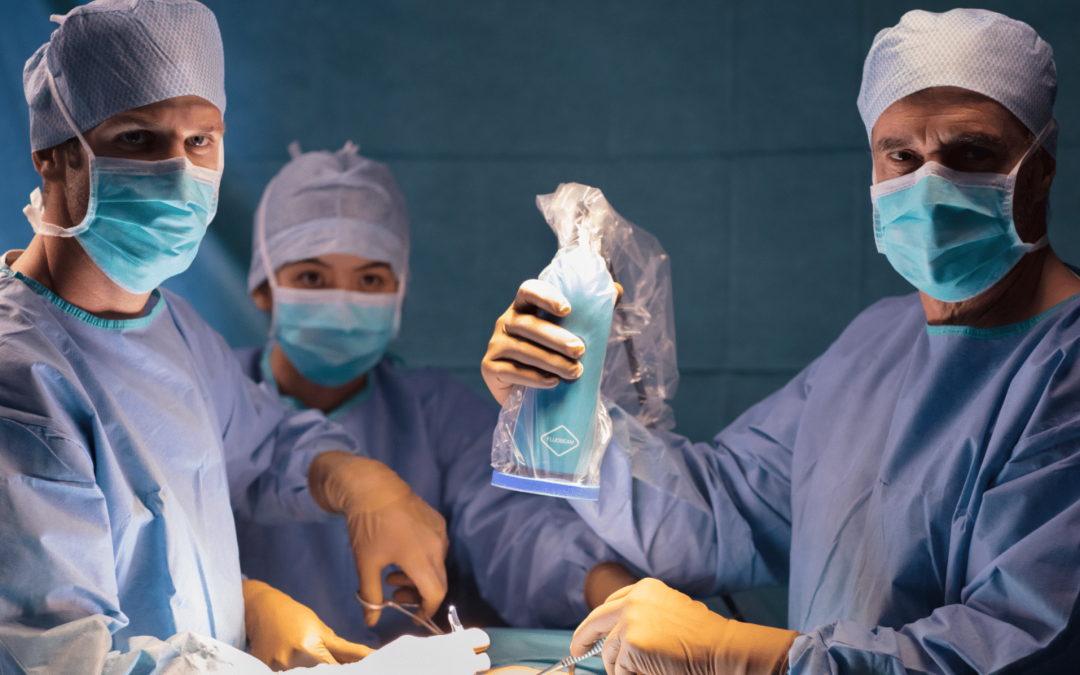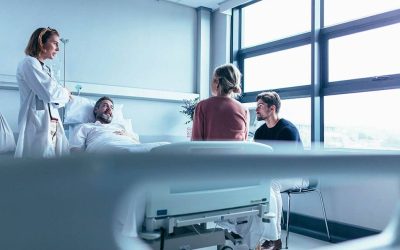Women who wish to rapidly retake possession of their bodies after a mastectomy face the issue of whether or not to have a breast reconstruction. Out of the 20,000 mastectomies performed each year in France, 25% of patients choose to have a breast reconstruction (13% immediately following the removal and 12% within the next year). A breast implant placed under the pectoral muscle is the most commonly used reconstruction technique. An alternative to having a breast implant is a reconstruction using a DIEP flap (a strip of skin and fat) – a technique used in France since 1994. A DIEP flap is less invasive than a TRAM flap, which requires a strip of muscle/skin and the removal of part of the rectus abdominis muscle and its aponeurosis. A DIEP flap does not involve any muscle or aponeurosis. Patients can be offered this surgical technique immediately after the mastectomy and even before any radiation therapy sessions, to avoid the trauma of losing a breast.
Reconstruction after mastectomy: breast implants are the most commonly used technique
Breast reconstruction is an integral part of the treatment of breast cancer and the care pathway of patients. A mastectomy (also called a mammectomy) is often perceived as a mutilation and has a major psychological and physical impact: shock associated with the loss of a breast, difference in volume between the two breasts and deformity.
To overcome this loss, a woman needs to rebuild herself “physically” and reconnect with her identity as a woman. And breast implants remain the most widely used cosmetic procedure for this purpose.
Limitations of breast implants and some drawbacks
Breast implants can involve some drawbacks and limitations, which should be taken into account, namely:
- Presence of a foreign body.
- Risk of capsular contracture (hardening of the breast).
- Rupture of the implant following a violent impact.
- Life of a breast implant limited to 10 years.
- Need to replace it after 10 years and therefore undergo further surgery.
- Perceived risks following health scandals.
In addition, when a breast implant has been placed, its shape does not change. That means that a disproportion or even asymmetry may be visible in women who put on or lose weight. Patients are therefore forced to maintain a body shape as similar to that at the time of the reconstruction.
Another technique: using a flap from the latissimus dorsi muscle
Breast reconstruction using a dorsal flap is another plastic and reconstructive surgical technique. It involves placing an implant and combining it with a muscle flap (removal of the latissimus dorsi muscle).
The traditional reconstruction using a latissimus dorsi muscle consists in transposing the flap by it rotating around its vascular pedicle. It does not involve the removal of a flap; the flap in this case is referred to as a pedicled flap with the placement of a breast implant (combined reconstruction).
Another technique consists in removing a paddle of muscle-skin-fat from the latissimus dorsi muscle, which can sometimes avoid the need to use an implant (autologous reconstruction).
Alternative to breast implants: DIEP flaps, natural breast reconstruction
This breast reconstruction technique has been used for around twenty years in France. A DIEP (Deep Inferior Epigastric Perforator Flap) flap consists in using cutaneous and fatty flaps from the abdomen, which are then re-vascularised in the breast via anastomosis. This is an autologous reconstruction, with tissue taken from the patient to reconstitute a breast, without the need for an implant. The procedure can be performed immediately after a mastectomy, even if the patient requires subsequent radiation therapy.
Benefits of DIEP flaps for patients:
- The breast is formed from cutaneous and fatty tissues from the woman (no foreign body is involved).
- It is natural and the reconstituted breast will evolve with the patient’s body throughout her life.
- Surgery can be performed at the same time as the mastectomy, which avoids the need for further surgery. When the patient wakes up, she will not be confronted with the psychological shock of having lost a breast.
- Patients may also opt to have a breast reconstruction at a later date.
Follow-up after surgery
Follow-up after surgery ranges from 24 to 48 hours, and a five-day hospital stay is required to ensure the vitality of the flap. Complications involved in DIEP flaps are mainly vascular: risk of flap necrosis (total or partial), fat necrosis, haematoma and venous congestion.
In all cases, a second operation is required to reconstruct the areola and nipple (areola/nipple plate) from the patient’s own tissues.
Why is the DIEP technique used so infrequently in France?
In France, this method was imported from the United States and used for the first time by Professor Laurent Lantieri, a surgeon specialising in reconstructive plastic surgery and in natural reconstruction techniques using microsurgery (Georges Pompidou Hospital in Paris).
This technique preserves the rectus abdominis muscles of the abdomen but the 10-cm incision can cause traction on the nerves linked to these muscles (impact on the tonicity of the abdomen).
As the surgery is particularly tricky, especially in the anastomosis phase (tissue re-vascularisation), it must be performed by a plastic surgeon who specialises in microsurgery and who masters this breast-reconstruction technique.
In France, only a few clinics and hospitals specialise in this type of breast-reconstruction surgery (Lyon, Toulouse, Marseilles, Paris, Villejuif) and few teams are trained in these cutting-edge techniques, which require considerable experience and training.
Fluorescence imaging for this type of microsurgery
To prevent the risk of necrosis associated with a DIEP flap, the FLUOBEAM® fluorescence imaging system developed by FLUOPTICS© is an innovation that helps surgeons in this breast-reconstruction technique.
Indocyanine green is a fluorescent (non-radioactive) agent that is injected into the patient. Combined with this fluorescence imaging device, it allows the surgeon to view in real-time the perfusion of the flaps and tissues at each stage of the operation. Surgeons can therefore select the best perfused sections and avoid any risk of necrosis by increasing the safety of the anastomosis phase.
The FLUOBEAM® fluorescence imaging device provides accurate information to surgeons on the vascularisation quality of the flaps.
The DIEP flap technique offers many benefits for patients who have undergone mastectomy following breast cancer. Many scientific and medical advances have been made in this type of reconstruction using microsurgery techniques, meaning that it is possible to significantly reduce the risk of complications (necrosis, venous congestion). The fluorescence imaging developed by FLUOPTICS© helps surgeons during surgery by providing them with more accurate information to ensure the perfect vascularisation of the flap.
To find out more, also read:




